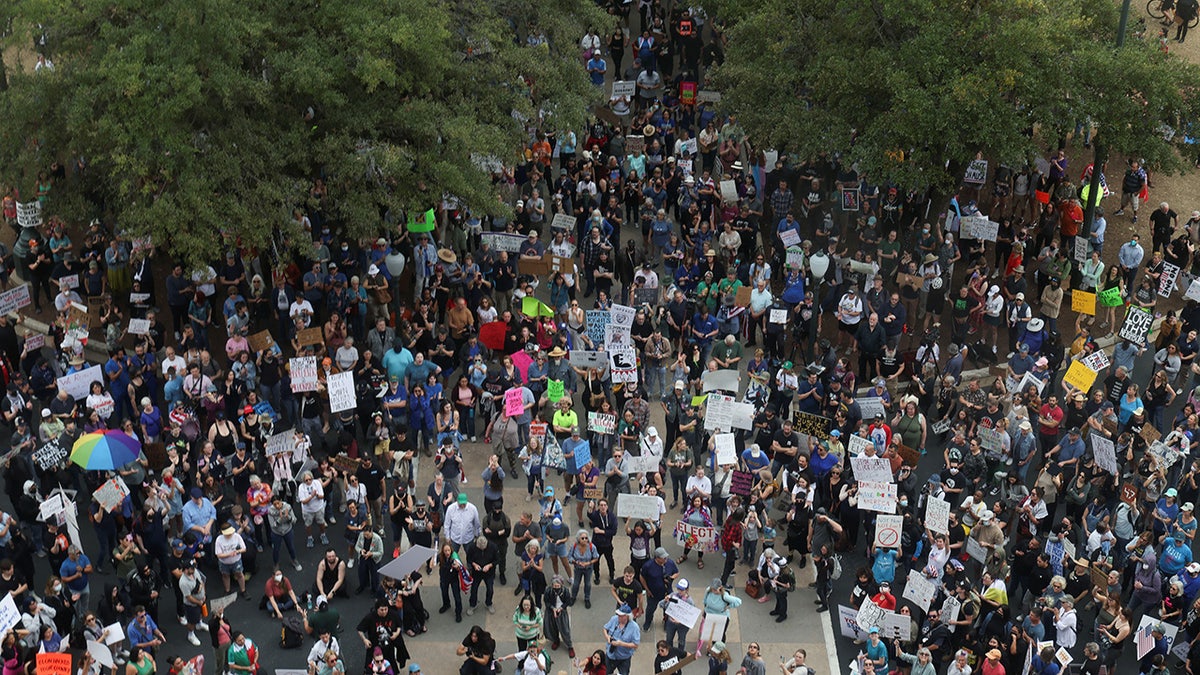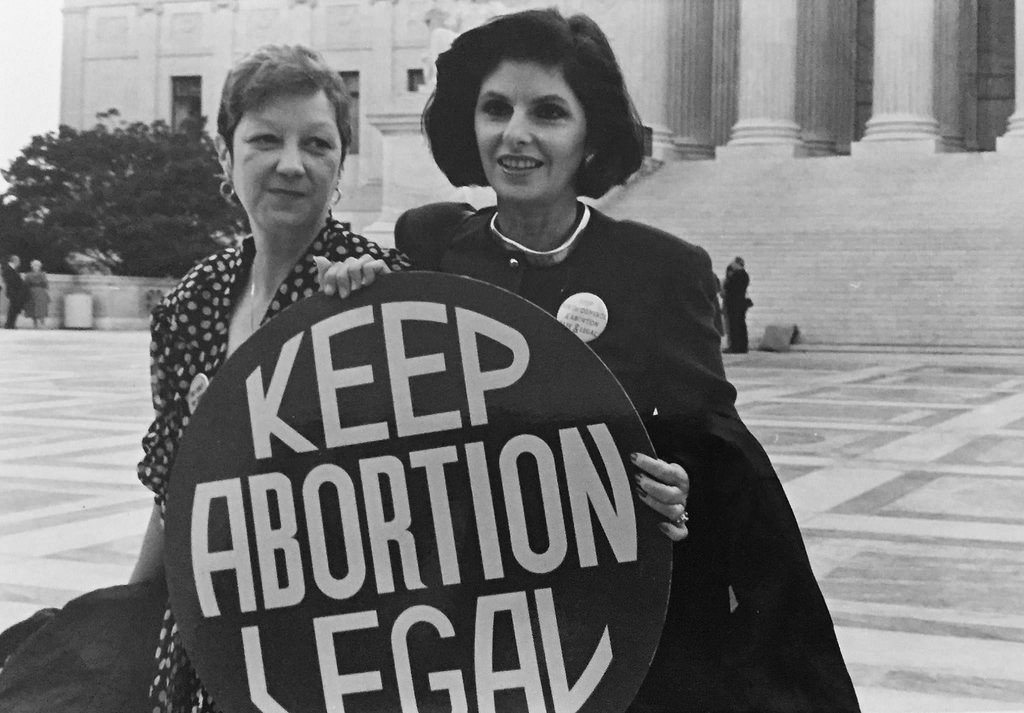Analysis: The Anti-Trump Protests Sweeping The US

Table of Contents
The Driving Forces Behind the Anti-Trump Protests
The surge in anti-Trump protests stems from a complex interplay of factors, far beyond simple partisan disagreement. These protests represent a broad coalition of individuals and groups united by shared concerns, though the specific issues motivating them vary.
Policy Opposition:
Many anti-Trump protests are directly fueled by opposition to specific policies enacted during his presidency. These include:
-
Immigration Policy: The controversial travel ban, the "zero tolerance" policy at the border separating families, and the ongoing debate over border wall construction have sparked widespread outrage and fueled numerous protests. Chants such as "No ban, no wall, no racist USA!" frequently echoed at these demonstrations. Organizations like the American Civil Liberties Union (ACLU) played a significant role in organizing and supporting these protests.
-
Healthcare Policy: Attempts to repeal and replace the Affordable Care Act (ACA), leading to concerns about healthcare access and affordability, ignited significant protests across the country. Protesters carried signs reading "Protect our healthcare" and "Medicare for All."
-
Environmental Regulations: Rollbacks of environmental protections and withdrawal from the Paris Agreement on climate change have drawn significant opposition, with environmental groups organizing protests focused on climate action and conservation.
Concerns about Democracy and Institutions:
Beyond specific policies, a significant driver of anti-Trump protests is a deep concern about threats to democratic norms and institutions. This includes:
-
Attacks on the Press: Repeated attacks on the media as "fake news" have raised concerns about press freedom and the public's access to reliable information. Protests often featured signs defending a free press and condemning the suppression of dissent.
-
Judicial Appointments: Controversial judicial appointments, perceived as threatening the independence of the judiciary, fueled protests outside court buildings and government offices. Concerns about the erosion of checks and balances within the government were prominent themes.
-
Social Media's Role: Social media platforms like Twitter and Facebook played a crucial role in organizing and amplifying concerns about these issues, facilitating the mobilization of protesters across geographical boundaries.
Social and Economic Inequality:
The anti-Trump protests also reflect underlying concerns about social and economic inequality.
-
Income Inequality: Growing income disparity and the perception of economic policies favoring the wealthy have fueled protests, particularly among young people and marginalized communities.
-
Access to Healthcare and Education: Concerns about access to affordable healthcare and quality education are interwoven with broader anxieties about economic opportunity and social mobility, contributing to the protest movement's diverse composition.
-
Demographic Makeup: The anti-Trump protests drew participants from across the political spectrum and demographic groups, although younger people, women, and minority groups were often prominently represented, reflecting the issues most important to their respective communities.
Geographic Distribution and Protest Tactics
Mapping the Protests:
Anti-Trump protests have occurred across the United States, but their intensity and frequency vary geographically. Major cities like New York, Los Angeles, Chicago, and Washington D.C. witnessed frequent and large-scale demonstrations. However, significant protests also took place in smaller cities and towns across the country, indicating a widespread and diverse opposition. (A map visualizing protest frequency by state would be beneficial here).
Methods of Protest:
The anti-Trump protest movement employed a wide range of tactics:
-
Marches and Rallies: Large-scale marches and rallies were common, providing a visible platform for expressing dissent.
-
Civil Disobedience: Acts of civil disobedience, such as sit-ins and traffic blockades, were used to disrupt normal routines and draw attention to specific issues.
-
Online Activism: Social media played a crucial role in organizing protests, disseminating information, and coordinating actions online.
The effectiveness of these tactics varied, with some leading to policy changes or increased public awareness, while others faced challenges in achieving their intended goals. Notable incidents included clashes with law enforcement during some protests, highlighting the complex dynamics between protesters and authorities.
The Impact and Long-Term Implications of the Anti-Trump Protests
Political Impact:
The anti-Trump protests had a demonstrable, albeit complex, impact on the political landscape:
-
Public Opinion: While the protests didn't uniformly shift public opinion, they contributed to a national conversation about key policy issues and helped frame the political debate.
-
Election Outcomes: The energy and mobilization demonstrated in the protests likely influenced voter turnout and contributed to election results in some instances.
-
Policy Shifts: While not directly responsible for all policy shifts, the widespread and persistent nature of the protests undoubtedly put pressure on policymakers and contributed to a reassessment of certain government policies.
Social Impact:
The anti-Trump protests had significant social consequences:
-
Social Cohesion: While the protests may have deepened partisan divisions in some respects, they also served as a platform for diverse groups to unite around shared concerns.
-
Raising Awareness: The protests raised awareness about various social justice issues, from racial justice to LGBTQ+ rights and environmental protection.
-
Political Participation: The protests likely had a long-term effect on political participation and activism, inspiring younger generations to become more engaged in political discourse and action.
Understanding and Engaging with the Anti-Trump Protest Movement
In conclusion, the anti-Trump protests were driven by a complex interplay of policy disagreements, anxieties about democratic institutions, and concerns about social and economic inequality. These protests manifested across the United States, utilizing diverse tactics to achieve various objectives. Understanding the multifaceted nature of these protests is crucial for comprehending the political and social climate of the time and for predicting future trends in political activism. By analyzing the anti-Trump movement, we gain insight into the anxieties and aspirations shaping American society. To remain informed and contribute to the ongoing political discourse, we must continue to monitor the evolving landscape of anti-Trump protests and related movements, actively participating in informed discussions and civic engagement. Only by engaging with these complex issues can we build a more informed and representative democracy.

Featured Posts
-
 Los Angeles Palisades Fire Impact On Celebrity Homes Full List
Apr 22, 2025
Los Angeles Palisades Fire Impact On Celebrity Homes Full List
Apr 22, 2025 -
 Zuckerberg And Trump A New Era For Facebook And Politics
Apr 22, 2025
Zuckerberg And Trump A New Era For Facebook And Politics
Apr 22, 2025 -
 Over The Counter Birth Control Implications For Reproductive Healthcare After Roe V Wade
Apr 22, 2025
Over The Counter Birth Control Implications For Reproductive Healthcare After Roe V Wade
Apr 22, 2025 -
 Secret Service Closes White House Cocaine Investigation
Apr 22, 2025
Secret Service Closes White House Cocaine Investigation
Apr 22, 2025 -
 Strengthening Nordic Defense The Potential Of Swedish Tanks And Finnish Troops
Apr 22, 2025
Strengthening Nordic Defense The Potential Of Swedish Tanks And Finnish Troops
Apr 22, 2025
